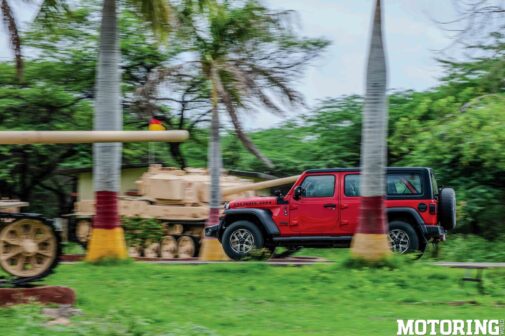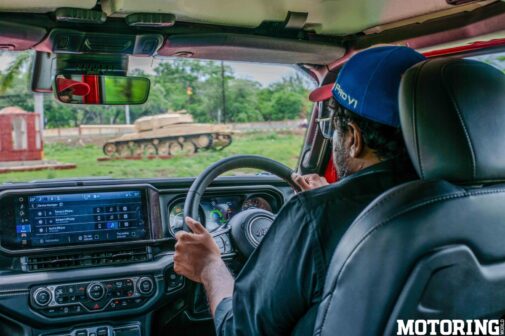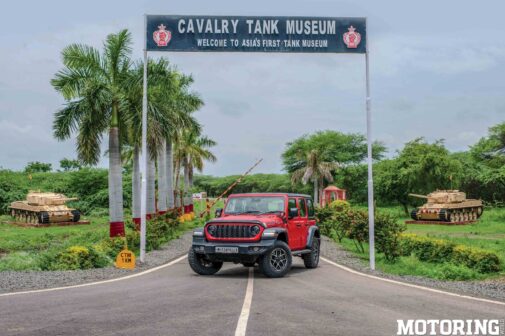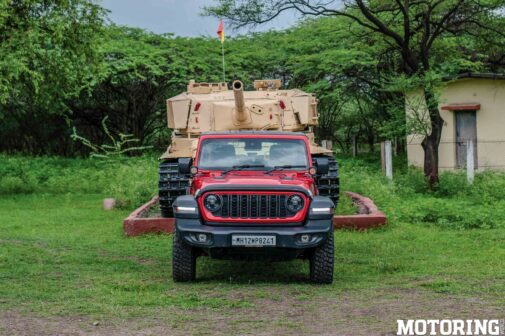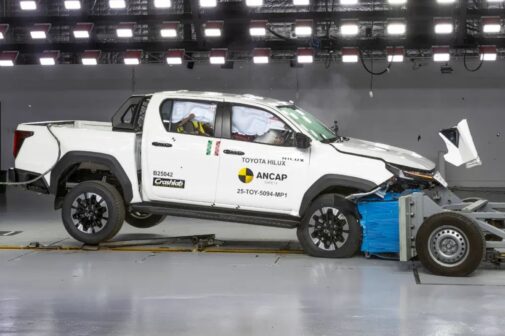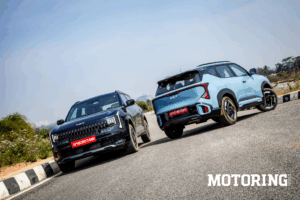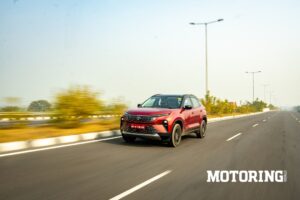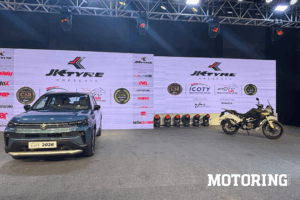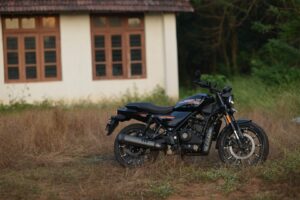The memory of tackling forest trails and river crossings in the previous-gen Wrangler still lingers. So, when Jeep offered me a second chance, I jumped in. This new Wrangler, with its bold American flag emblazoned on the tailgate, is a visual proclamation of its heritage. It’s a paradox: quintessentially American, yet proudly Indian-made.
The Wrangler is more than an SUV; it symbolises adventure. Its lineage traces back to the iconic Jeeps of World War II. Hours spent watching documentaries down a YouTube rabbit hole unveiled a striking resemblance – the silhouette, the utilitarian design, even the spirit. Jeep has captured this essence while infusing it with modern comforts. The tiny Jeep silhouette of the original WW2 car is etched onto the windscreen and the drive selector is a subtle yet powerful nod to its heritage. It’s like driving a piece of history, reimagined for the modern world.
The Wrangler is more than just a vehicle; it’s a lifestyle statement, a symbol of freedom and adventure. It’s not just a car; it’s a Jeep. Getting to know the history through documentaries was fascinating. Beyond the iconic Jeeps, the archival footage revealed a world of tanks rolling across landscapes. A recent tip from a family friend about a tank museum in Ahmednagar sparked an idea: combine history, off-roading, and a touch of nostalgia.
The journey began on an overcast day, the perfect backdrop for a Wrangler adventure. A surprising detour led us past the Jeep India plant in Ranjangaon. The air was thick with the sweet aroma of freshly baked biscuits, thanks to the nearby Britannia factory. A tempting distraction, but the tank museum beckoned. After a scenic 110-km drive, we arrived at our destination.
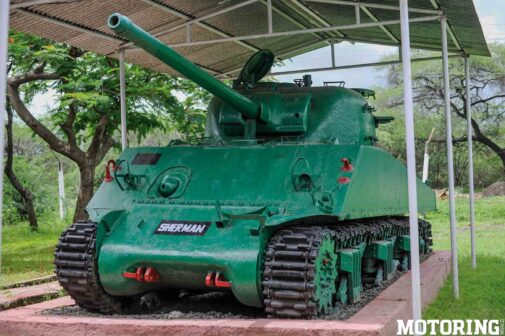
The approach to the tank museum was an experience in itself. Turning off the highway, we embarked on a winding road that felt like a journey through time. Tanks, relics of bygone eras, stood sentinel on either side, their weathered exteriors a testament to their service. It was a photographer’s dream, and the Wrangler, with its rugged charm, fit seamlessly into the scene. Parking the Jeep beside these war machines, capturing the contrast between old and new, was a thrill.
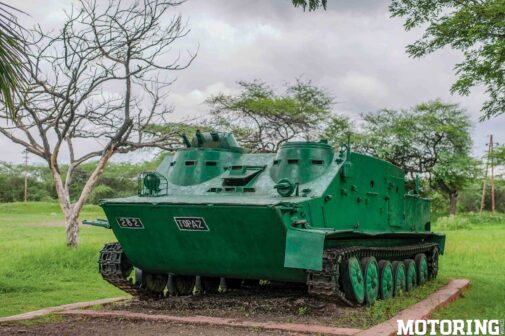
Now the Cavalry Tank Museum showcases a remarkable collection of tanks, specialist vehicles, and armoured automobiles that have been pivotal in ensuring the nation’s security over the years. Informative boards throughout the exhibit offer detailed insights about each tank. Among the museum’s most popular displays are tanks from World War I and II, Japanese and German tanks, and Pakistani tanks captured during the 1965 and 1971 wars.
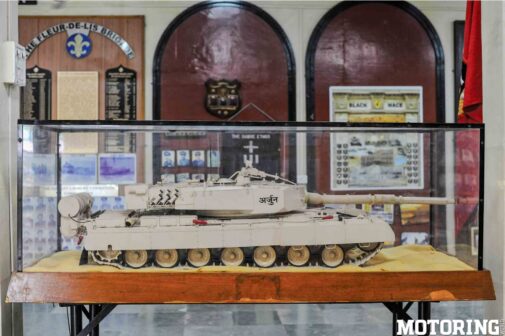
The Rolls-Royce armoured car was a bittersweet encounter. Its dilapidated state was a stark contrast to its former glory. Yet, the sheer size and imposing presence were undeniable. The Sherman tank, a childhood icon thanks to Beetle Bailey comics, was a highlight. Seeing this behemoth in person was surreal. Both the Sherman and the original Jeep were instrumental in Allied victories, their mass production a testament to American industrial might. Comparing the modern Wrangler to these tanks revealed an unexpected connection. Both owe their existence to the defence industry, their designs influenced by the demands of combat. It’s fascinating to see how a utilitarian vehicle like the Jeep has evolved into a lifestyle icon, while the tank remains a symbol of raw power and historical significance.
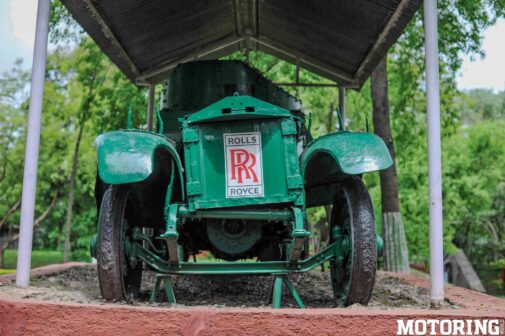
The museum offered more than just static displays. A detailed scale model of the Arjun Mk-2 tank, housed in a glass case, was a sight to behold. The intricate detailing rivalled those of high-end model makers like Maisto or Burago. Other exhibits showcased the versatility of tank design. We encountered specialised vehicles designed for beach landings and even a tank capable of transforming into a temporary bridge, a testament to the ingenuity of military engineers. These displays offered a fascinating glimpse into the evolution of armoured warfare.
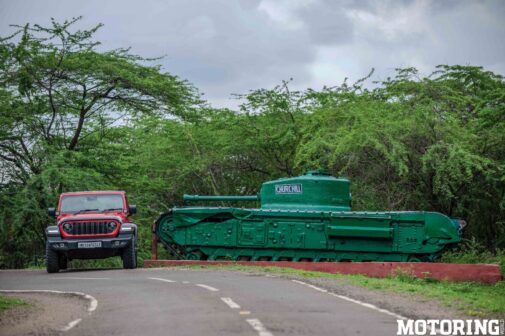
The debate on the future of tanks in warfare is a complex one. While drones have undoubtedly revolutionised modern warfare, many defence analysts believe tanks still hold a crucial role. The museum’s experts echoed this sentiment, emphasising the tank’s symbolic importance as a deterrent. It’s a statement of strength, a physical manifestation of a nation’s resolve. The Wrangler, in its way, embodies a similar spirit. It’s a capable off-roader, ready for adventure, but also a symbol of freedom and individuality. Both the Tanks and the Wrangler, products of different eras and serving distinct purposes, represent the evolution of mobility and human ingenuity.
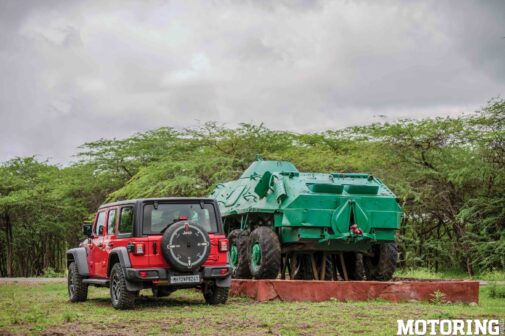
Our time at the Cavalry Tank Museum was a poignant journey through history. Each tank was a testament to human ingenuity and the sacrifices made by those who operated them. It was a sobering reminder of the strength and determination of our armed forces, guarding our borders relentlessly. The museum was a treasure trove for history buffs and a visual feast for anyone with an appreciation for engineering marvel.
The drive back in the Wrangler was a quiet contemplation of what we had just witnessed. The car, with its comfortable cabin, provided a stark contrast to the harsh realities of war. The tiny Jeep silhouette on the windshield seemed to connect the past and present, a symbol of resilience and adaptability. It was a day filled with history, adventure, and a deep appreciation for the machines that have shaped our world.










